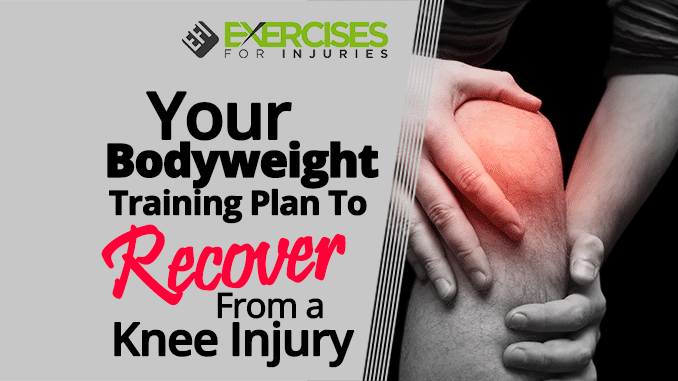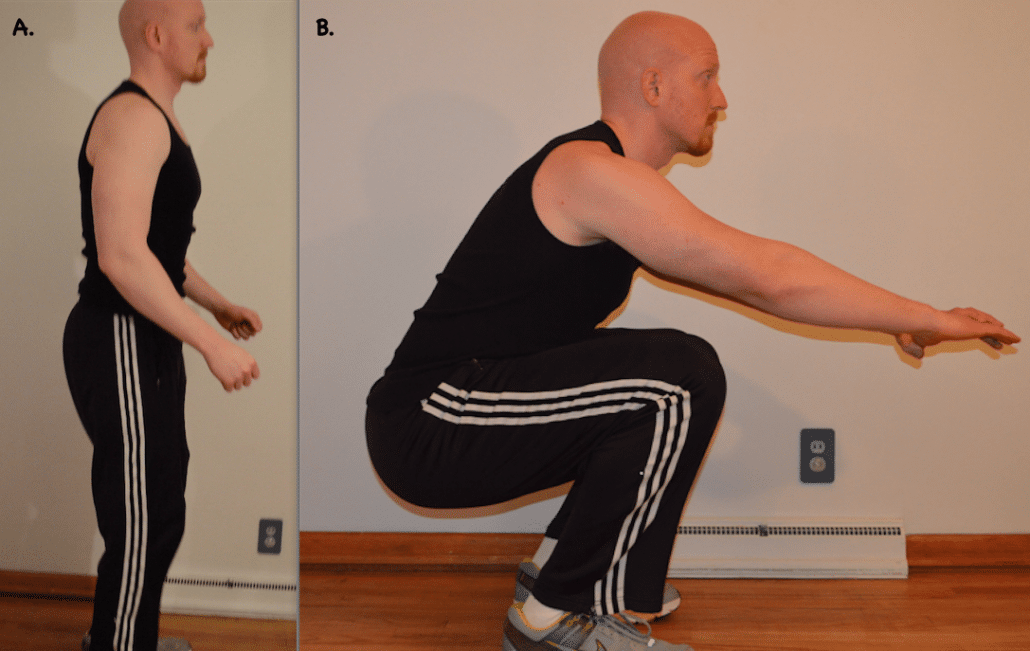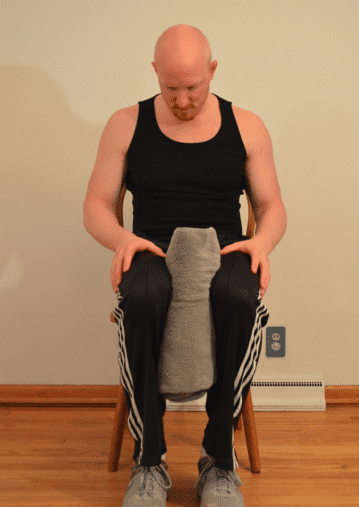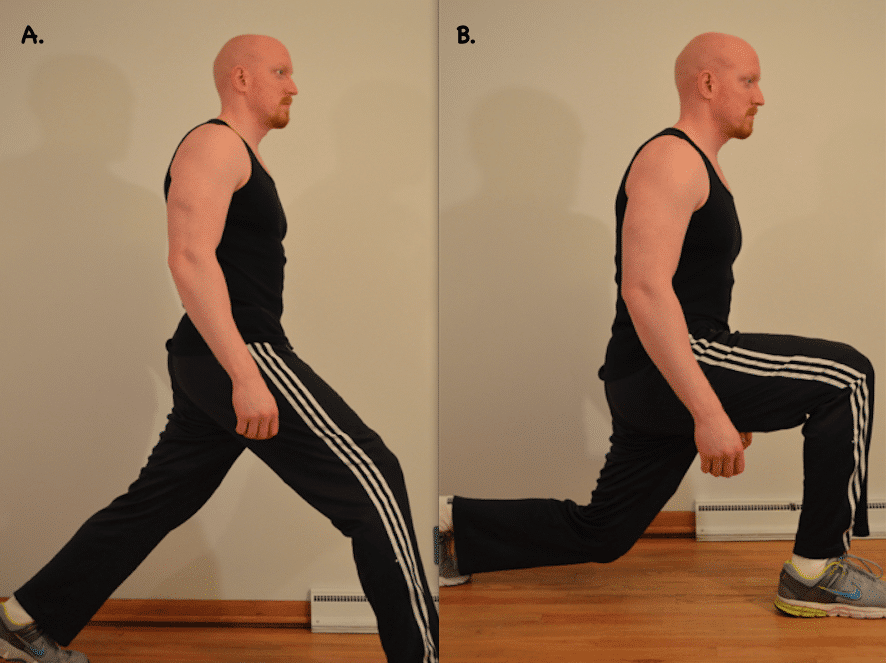
This week I am off to Austin, Texas but while I was in Orange County two weeks ago, one of the trainers there was Todd Kuslikis.
He asked if my readers would be interested in some tips when it comes to knee pain and bodyweight exercises.
I said, “yes” and this is what he sent over.
Enjoy the article!
We will talk to you tomorrow.
Rick Kaselj, MS
==================
Are you out of commission due to a knee injury? There’s no questioning that suffering from an injury can be one of the most frustrating experiences for any athlete or recreational exerciser.
One minute you’re out on the field giving it your all and the next, you’re on the sideline dealing with intense pain.
Often, injuries occur due to the most unexpected of reasons, making it even more frustrating that you are now sitting on the bench because of it.
Fortunately, if you get a good recovery game plan in place, you can get back into your normal routine much faster. It all comes down to taking proper recovery strategies, monitoring your degree of recovery, and then performing some strengthening recovery exercises to ensure the muscles, ligaments, and tendons are all ready to begin training again.
Knee injuries are one of the most common injuries athletes face. In this article, I’ll share with you a recovery game plan so you speed up your recovery time.
Implement Smart Recovery Strategies
First off, you must make sure you are taking smart recovery strategies before doing training of any kind. This means icing the injured area 3-5 times per week for 15-20 minutes each time. After that, start applying heat to help increase blood flow and boost recovery.
From there, you also want to make sure you are monitoring your pain. If something hurts, stop immediately. Now is not the time to push your body. Also, remember that you should feel 100% for more than 3 days before going back into your usual workouts.
This will help to lower the chances that you re-aggravate the area because you started exercising too soon.
Give your body time to heal and you can make a smooth transition back to your workout sessions.
When it comes to the knee, Rick goes through this in his Fix My Knee Pain program.
Your Recovery Exercises
As you go through the recovery process, there are some great bodyweight exercises to be performing. These will help you maintain lean muscle mass, improve your form for exercises you will later do with weight once you are healed, and help to strengthen any weak areas that may have caused the injury in the first place.
#1 – Bodyweight Squats
The first exercise is bodyweight squats. While you’ve likely been doing these with weights on your back in the typical back squat fashion, now you want to unload and focus on form.
Move slowly down through the body weight squat, feeling the tension in the muscles. Also be sure that the knees are moving directly over the toes, paying special attention to good form.
Do 10-20 reps of these three times a week and soon you’ll be stronger in all the ligaments surrounding the knees and will have good form habits built so when you start hoisting more weight, pain won’t result.
#2 – Inner Thigh Squeezes
At times, a knee injury can be the result of the inner thigh muscles being weaker than the outer thigh muscles. What happens in this scenario is your outer thigh will start to pull the knee cap in that direction, causing grinding to take place each time the knee is bent.
To offset this, you need to strengthen the inner thigh muscle.
A great exercise to accomplish this is inner thigh squeezes. Sit in a chair with your knees bent at 90 degree angles. Place a rolled towel between your knees and squeeze your knees against the towel as hard as you can.
Hold that for 10-20 seconds and then release. Repeat 2-3 more times.
#3 – Stationary Lunges
Finally, stationary lunges are also a good bodyweight exercise to help with a knee injury. This one will help build stability in the knee joint, getting you ready for more challenging exercises.
Be sure as you step forward into the lunge, the knee is following directly over the toes, not moving towards one side of the body or the other.
It’s quite common for people to let their knees move inward or outward as they perform their lunges, which will create instability and make you more prone to injury.
Performing this exercise without weights will help you build better form so as soon as weights are added, you’re using the proper pattern of movement.
Learning From The Experience
Finally, make sure that you don’t neglect learning from your experience. Take some time to make sure you fully understand what it was that caused you to become injured in the first place.
This could have been exercising with poor form, doing too much too soon, not taking enough total rest time between your workouts, or perhaps it was simply a careless act you did that resulted in injury.
Whatever the case, make sure you know what happened and put changes in place so that it will never happen again. If you neglect to do this, there’s a very high probability you’ll find yourself in the exact same position soon again.
Using bodyweight training to work through your injuries is a fantastic way to keep your motivation high, your mind focused, your body still doing regular exercise, and to boost the strength in the ligaments and tendons – tissues that may have gone overlooked with your usual training regime.
Don’t overlook the potential it has to offer.
If you are looking for the ultimate resource for bodyweight exercises, then click here to check out this resource from over 30+ bodyweight experts.
Todd Kuslikis
.



